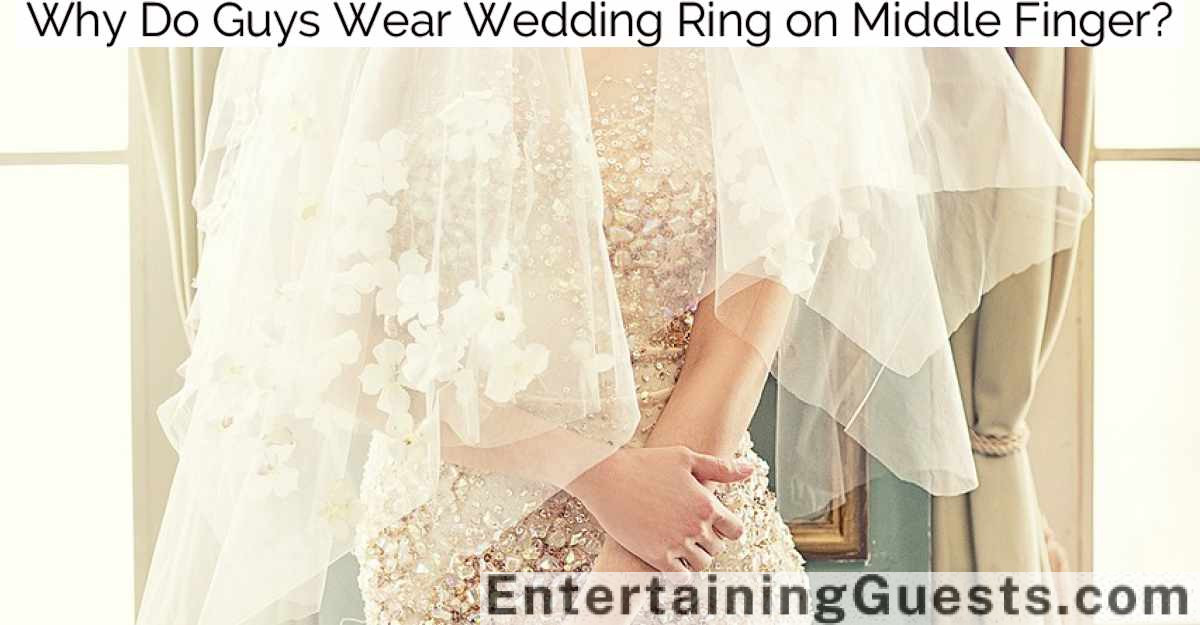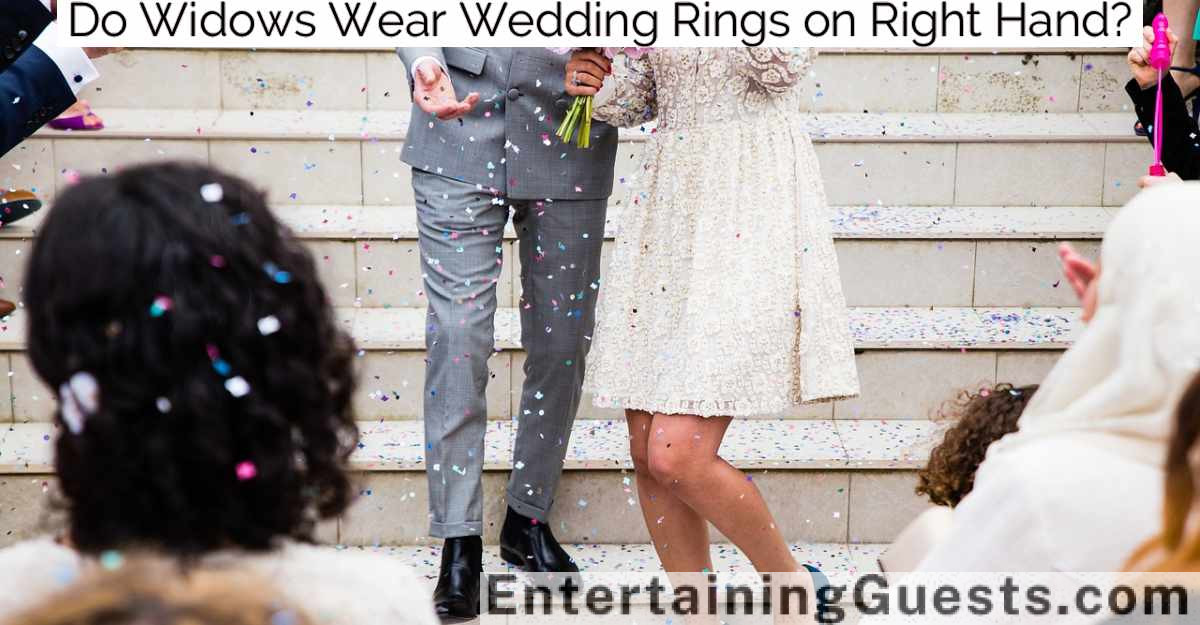Wearing red to a wedding often contradicts cultural norms and may lead to unintended social implications. In many Western cultures, red can overshadow the bride due to its strong visual impact and connotations of passion and intensity. Similarly, in Indian and Chinese weddings, red is traditionally reserved for the bride as a symbol of prosperity and joy, making it inappropriate for guests to wear. Choosing to wear red could inadvertently suggest one’s desire to be the center of attention, conflicting with the day’s focus on the celebrants. Exploring alternatives demonstrates respect and enhances the celebration’s harmony, allowing further insights into appropriate wedding etiquette.
Key Takeaways
- Red can overshadow the bride, particularly in Western cultures where it’s seen as too bold and attention-grabbing.
- Wearing red may be perceived as competing with the bride, drawing undue attention and potentially causing drama.
- Cultural norms in many societies reserve red for the bride as a symbol of prosperity and joy, making it inappropriate for guests.
- Red attire can clash with wedding themes, especially if the couple has specified a particular color scheme or style for their event.
- Guests are encouraged to choose colors that complement rather than dominate the wedding palette, ensuring harmony and respect for the celebration.
The Spotlight Effect
The spotlight effect refers to the phenomenon where individuals believe they’re being noticed more than they actually are. This cognitive bias leads people to overestimate the extent to which their actions and appearances are observed and judged by others.
In the context of social events like weddings, this effect can greatly influence guests’ choices in attire. For instance, choosing to wear red, a color traditionally associated with attention and prominence, might cause a guest to feel self-conscious, under the impression that all eyes are on them. They may worry that their fashion choice is drawing undue attention or even causing disruption. However, this anxiety is often misplaced as other attendees are likely preoccupied with their own appearance and the event’s proceedings.
Understanding the spotlight effect can alleviate some of the social pressure individuals feel in public settings. It encourages a more relaxed and authentic expression of one’s style without the undue fear of negative scrutiny. Guests can then navigate their wardrobe choices with more confidence, knowing that the spotlight they perceive is less intense than imagined, and their presence is one of many in the celebratory gathering.
Cultural Significance
Cultural contexts greatly influence perceptions of color, particularly the choice to wear red at weddings, which may carry various symbolic meanings across different societies. In many cultures, red is not merely a vivid color choice but a rich symbol laden with meaning. This color’s significance spans from joy and prosperity to scandal and taboo, depending on the cultural lens through which it is viewed.
Here is a concise illustration of red’s varying implications in wedding attire across four different cultures:
| Culture | Significance of Red |
|---|---|
| Chinese | Symbolizes good luck, joy, and prosperity; often worn by brides. |
| Indian | Traditionally favored for bridal wear; signifies purity, fertility, and prosperity. |
| Western | Often considered too bold or attention-grabbing; can be viewed as competing with the bride. |
| Nigerian | Common in some ethnic groups; represents respect and liveliness. |
Understanding these cultural nuances is essential for guests when choosing their attire for weddings in different societies. It guarantees respect for traditional values and avoids unintended offense, which underscores the importance of cultural awareness in such globalized social settings. This awareness isn’t just polite; it’s a bridge to deeper cross-cultural understanding and appreciation.
Bridal Traditions
In various cultures, the color red holds profound significance, often symbolizing prosperity, joy, and good fortune, which profoundly influences bridal attire.
The decision to wear red at a wedding can both honor tradition and make a vibrant statement, yet it’s essential to reflect on the bride’s perspective on sharing the spotlight during her special day.
This cultural awareness guarantees that guests’ fashion choices respect the couple’s desires and the ceremonial tone they wish to set.
Cultural Significance of Red
Red holds profound significance in bridal traditions across various cultures, symbolizing prosperity, love, and joy.
In many Asian countries, the color red is deeply embedded in wedding ceremonies. For instance, in Chinese culture, brides often wear red dresses, known as qipaos or cheongsams, to usher in luck and ward off evil spirits. The color embodies liveliness and is considered auspicious, central to fostering a harmonious and prosperous marital union.
Similarly, in Indian weddings, red plays an essential role. It appears in the intricate designs of bridal sarees and lehengas, reflecting the sun’s powerful energy and fertility. A bride in red is traditionally seen as a manifestation of Lakshmi, the goddess of wealth and beauty, blessing the matrimonial bond.
In contrast, the significance of red in Western cultures differs. It’s less frequently chosen for bridal gowns, but when it is, it often conveys confidence and a break from tradition. However, guests are typically advised to avoid red to prevent overshadowing the bride or implying inappropriate symbolism.
Understanding these nuanced cultural meanings behind wearing red can foster greater respect and appreciation for global wedding traditions, celebrating the diversity that each unique ceremony brings to the forefront of marital celebrations.
Bride’s Spotlight Sharing
While red is prominent in many wedding traditions, the bride’s attire serves as a focal point, illuminating her role and significance within the ceremony. Traditionally, the bride’s dress symbolizes purity and celebration—her unique status on this pivotal day.
In many cultures, the bride’s ensemble is deliberately distinct to guarantee she captures the undivided attention of the attendees. This tradition underscores the idea that the wedding day belongs mainly to the bride, reflecting a deep-rooted cultural belief in her ceremonial prominence.
When guests choose to wear red, a color often associated with luck, passion, and strength in various cultures, it can inadvertently shift the focus away from the bride. This is particularly palpable in settings where the bride opts for a more subdued or traditional white gown.
The striking nature of red can draw the eye, potentially overshadowing the bride and diluting the visual impact of her appearance. Consequently, out of respect and to preserve the bridal spotlight, guests are typically advised against wearing red.
This practice guarantees that the bride remains the central figure of the celebration, her attire a visual evidence of her singular importance on her wedding day.
Color Psychology
One often associates red with emotions of passion and intensity, which can influence perceptions and interactions at social events like weddings. This vibrant color not only captures attention but also evokes strong feelings that can vary greatly across different cultures.
In some cultures, red is celebrated as a symbol of good luck and prosperity, particularly in weddings. However, in Western societies, red can also be seen as a statement of defiance or boldness, potentially overshadowing the bride on her special day.
The psychological impact of red extends beyond cultural interpretations. It’s a color that inherently draws the eye, thereby diverting focus potentially away from the bride, who traditionally is the center of attention. The intensity of red can also alter the mood of the event, introducing an element of drama and, perhaps unintentionally, competition.
Understanding these nuances is vital in respecting the event’s atmosphere and the couple’s desires. Wearing red to a wedding isn’t just a fashion choice but a decision that carries deeper psychological implications.
It’s important to reflect on how this color will harmonize with the event’s emotional tone and cultural setting, ensuring that one’s attire complements rather than disrupts the celebration.
Guest Etiquette
Guests should carefully consider their attire, ensuring it aligns with the cultural norms and the couple’s preferences to maintain harmony at the wedding. It’s vital to recognize that weddings are momentous occasions, and the visual aspect, including guest attire, plays a significant role in the event’s ambiance. Opting for outfits that respect the cultural and religious sentiments of the host community demonstrates sensitivity and respect.
For instance, in many cultures, wearing red at a wedding can be perceived as an attempt to upstage the couple, particularly the bride, as red is often a color reserved for her. In contrast, other cultures celebrate when guests wear vibrant colors as it adds to the festivity of the occasion. Consequently, understanding these nuances is fundamental.
Additionally, adhering to the dress code specified in the invitation isn’t just a matter of formality but also of etiquette. It signifies the guest’s respect for the couple’s effort to curate their special day. Ignoring these details can unintentionally convey a lack of consideration.
As a result, when preparing for a wedding, guests should prioritize obtaining clarity about the expected dress code and the cultural implications of their chosen attire.
Wedding Themes
Wedding themes often dictate the specific attire and decoration choices, reflecting the couple’s personal style and the intended atmosphere of their celebration. Themes can range from traditional to modern, rustic to glamorous, each carrying its own set of guidelines and expectations. This intricately woven aspect of wedding planning guarantees that every element, from the venue to the guest attire, harmonizes to create a cohesive experience.
For instance, a vintage-themed wedding might encourage attire that echoes the elegance of a bygone era, possibly discouraging bright colors like red that could clash with the subtle hues typical of such a theme. Similarly, a beach wedding often calls for lighter fabrics and more casual dress to align with the natural, laid-back environment. Guests’ adherence to these thematic choices isn’t only a mark of respect to the hosts but also contributes to the visual and emotional impact of the event.
Moreover, understanding the theme helps guests navigate their wardrobe choices effectively, guaranteeing they neither underdress nor overdress. It’s essential for attendees to inquire about the theme beforehand if it’s not clearly stated in the invitation, to avoid any fashion faux pas that could detract from the celebration’s harmony and the couple’s vision.
Global Perspectives
Exploring the impact of cultural norms on wedding attire, it’s apparent that perceptions of appropriate colors vary considerably around the world. In many Western cultures, white is traditionally reserved for the bride, making red a more acceptable choice for guests. However, it’s crucial to note that in some Eastern cultures, red is the color of prosperity and happiness, often worn by the bride herself.
In China, for instance, red is considered auspicious and is predominant in wedding ceremonies. Brides typically wear red dresses as a symbol of luck and joy. Conversely, guests are encouraged to wear colors that complement but don’t overshadow the bride’s vibrant attire.
In contrast, wearing red to a wedding in certain Middle Eastern countries could be perceived as disrespectful. The color might clash with cultural norms that dictate more subdued dress codes for celebrations.
India also sees red as a bridal color, particularly in Hindu weddings where the bride’s attire often includes intricate designs in this bold hue. Guests, consequently, opt for other colorful garments to honor the significance of the red bridal wear without competing with it.
Understanding these diverse perspectives helps promote respect for cultural traditions and appropriateness in wedding guest attire across different societies.
Fashion Considerations
Beyond cultural norms, fashion considerations for wedding attire also involve choosing styles that are both elegant and appropriate for the event’s setting and season. When selecting an outfit, it is crucial to take into account the formality of the event, which is often indicated on the invitation. A formal daytime wedding may call for lighter fabrics and perhaps a hat, while an evening event typically requires darker, more sophisticated attire.
The table below provides guidance on selecting appropriate wedding attire according to different settings and times:
| Setting/Time | Appropriate Attire Recommendations |
|---|---|
| Daytime Garden | Light-colored suits, floral dresses |
| Beach Sunset | Loose, airy fabrics, light shawls |
| Formal Evening | Dark suits, evening gowns |
| Winter Banquet Hall | Heavy fabrics, layers |
| Country Club Afternoon | Smart casual, polished shoes |
Adhering to these considerations guarantees that guests remain respectful of the celebration’s tone. It is also wise to avoid overly bright colors unless the theme or couple explicitly allows it, as it can detract from the wedding’s cohesive aesthetic. Understanding these nuances not only shows respect for the hosts but also enhances the event’s elegance and harmony.
Alternative Choices
While adhering to traditional and seasonal fashion guidelines is important, exploring alternative choices allows for personal expression and creativity in wedding attire.
When selecting an outfit for a wedding where red is traditionally reserved for the bride or considered too bold, guests can opt for other vibrant yet acceptable hues. Shades like cobalt blue, emerald green, or deep purple offer sophistication without overshadowing the celebratory focus. These colors not only stand out but also maintain the festive spirit of the occasion.
For those preferring subtler options, pastel tones such as blush pink, soft lavender, or light gray provide a delicate touch appropriate for both daytime and evening ceremonies. These choices reflect a thoughtful consideration for the event’s aesthetic while ensuring that the wearer remains elegantly understated.
Moreover, incorporating cultural attire as an alternative can be both respectful and enriching. For instance, a tastefully chosen sari or a bespoke sherwani at an Indian wedding, or a hanbok at a Korean ceremony, celebrates cultural heritage and adds a unique dimension to the collective visual tableau of the event.
Thus, by embracing these alternatives, guests can demonstrate respect for the occasion and its cultural context, while also expressing their individual style.
Modern Wedding Trends
As modern weddings evolve, couples increasingly opt for eco-friendly decor, reflecting a commitment to sustainability.
They’re also embracing technology, from live-streaming ceremonies to interactive digital guestbooks, enhancing guest experiences.
These trends signify a shift towards personalization and environmental consciousness in contemporary nuptials.
Eco-Friendly Decor Choices
Couples are increasingly choosing eco-friendly decor to minimize their wedding’s environmental impact. This shift not only reflects a broader societal commitment to sustainability but also enhances the aesthetic appeal of wedding ceremonies and receptions. By integrating eco-conscious elements, couples demonstrate a thoughtful consideration of their ecological footprint, setting a responsible precedent for future celebrations.
Here are three popular eco-friendly decor choices:
-
Biodegradable Confetti: Instead of traditional plastic or paper confetti, many couples now opt for biodegradable alternatives such as dried flower petals or leaves. These materials decompose naturally, leaving no harmful residue behind.
-
Reusable Decor Items: Items such as glass jars, metal lanterns, and wooden signs not only add a rustic charm to wedding settings but also promote sustainability through reuse. Couples often repurpose these decorations for future events or as home decor, considerably reducing waste.
-
Local and Seasonal Flowers: Choosing local and seasonal flowers reduces the carbon footprint associated with long-distance transportation. This practice supports local economies and promotes biodiversity by encouraging the cultivation of a variety of floral species.
Tech-Enhanced Celebration Ideas
Tech-enhanced celebrations are transforming modern weddings by incorporating innovative technologies that offer guests interactive and memorable experiences.
From virtual reality tours of exotic honeymoon destinations to digital guestbooks where attendees can leave heartfelt messages, technology is elevating the traditional nuptial festivities to new heights.
Drone photography and videography are also becoming staples, capturing stunning aerial views that traditional cameras can’t achieve, providing couples with unique perspectives of their special day.
Moreover, live streaming services are increasingly popular, ensuring that no one misses out, regardless of geographical limitations.
This inclusion allows friends and family from around the globe to partake in the celebration virtually, bridging distances and fostering a sense of unity.
Advanced lighting techniques and projection mapping are used to transform venues from ordinary to spectacular, creating dynamic environments that respond to music and guest interactions.
Interactive food and drink stations equipped with self-service technology not only streamline the dining experience but also add an element of fun as guests customize their refreshments.
Frequently Asked Questions
How Do I Politely Ask About the Dress Code Before the Wedding?
She can politely inquire about the dress code by directly contacting the host or checking the invitation for details, ensuring she’s appropriately dressed and respects the event’s cultural and personal significance.
What if My Only Formal Dress Is Red?
If her only formal dress is red, she should consider contacting the host to inquire about the appropriateness of wearing red, or she might opt to rent or buy a different colored dress.
Can Children Wear Red to Weddings?
Children can typically wear red to weddings as they’re often exempt from strict dress codes. However, it’s best to consult with the hosts to guarantee their attire aligns with the event’s formality.
Is Wearing Red Acceptable at Casual or Informal Weddings?
Wearing red to casual or informal weddings can be acceptable, depending on cultural norms and the couple’s preferences. It’s best to consult the hosts or check the invitation for any specific dress code guidelines.
What Colors Are Safest to Wear to Any Wedding?
To any wedding, neutrals like beige, pastels, and soft blues are safest. They’re universally accepted and don’t overshadow the couple, ensuring guests blend in gracefully while respecting the event’s solemnity and joy.
Conclusion
In conclusion, refraining from wearing red to weddings is primarily due to its strong visual impact, cultural meanings, and the potential to overshadow the bridal party.
Guests should consider the significance of color in different cultures and adhere to the couple’s wishes, reflecting respect and good etiquette.
As modern weddings evolve, it’s essential to balance traditional customs with contemporary trends, ensuring choices are thoughtful and appropriate for the occasion.




